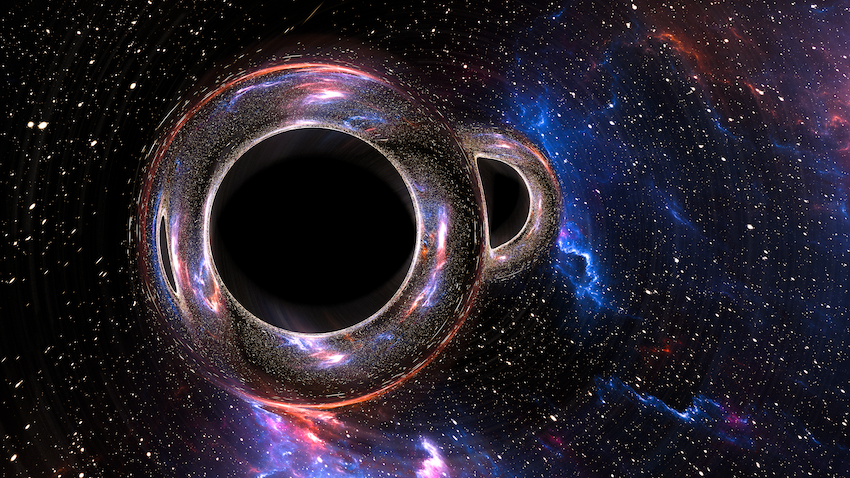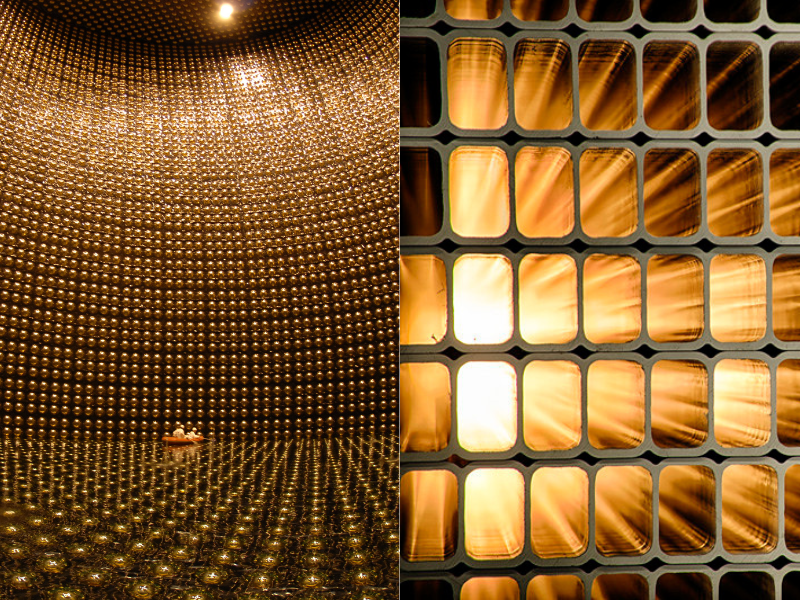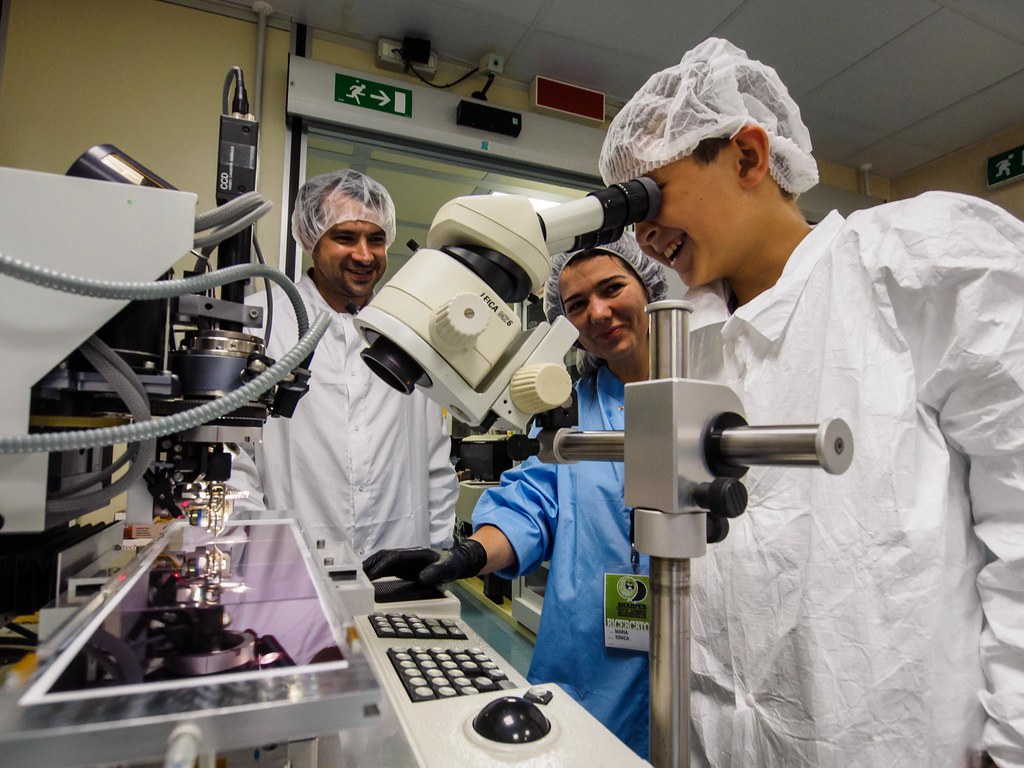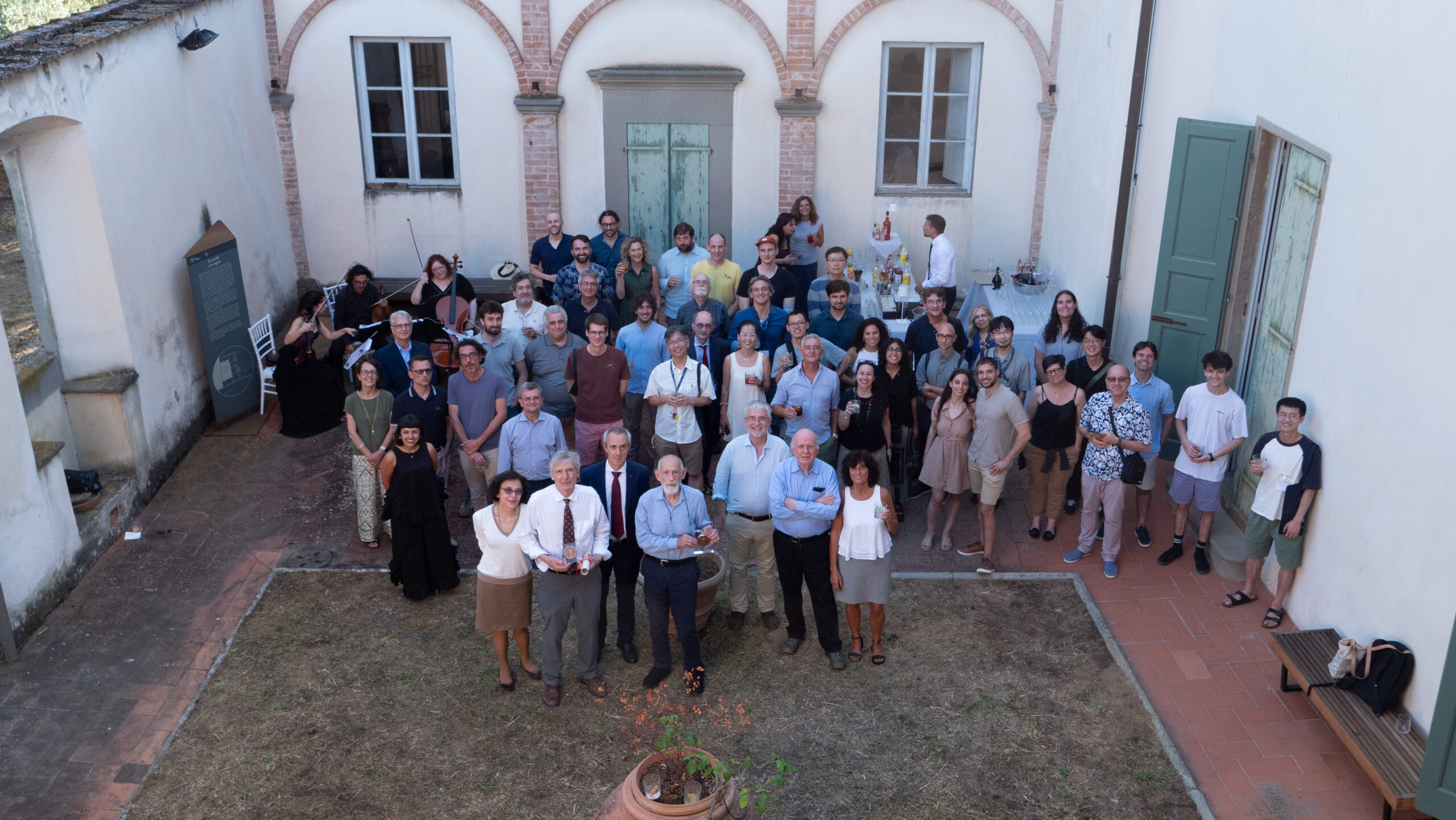Today, 17 July, in Florence at Villa Galileo, the historic residence where the great scientist spent the final years of his life, the award ceremony for the Galileo Galilei Medal 2025 is taking place. This prestigious international prize is awarded every two years by the INFN National Institute for Nuclear Physics together with the GGI Galileo Galilei Institute for Theoretical Physics, its National Centre for Advanced Studies in partnership with the University of Florence, to scientists who have made an outstanding contribution to the advancement of theoretical physics.
The medal has been awarded to Pierre Sikivie and Leonard Susskind “for their work, which represents humanity’s persistent efforts to see and understand what may appear invisible, revealing in the process profound connections between the largest and smallest scales of Nature,” as announced last February.
Attending the ceremony are Fulvio Piccinini, Director of GGI, Marco Ciuchini, member of the INFN Executive Board, Marco Pierini, Vice-Rector for Technology Transfer, Cultural Activities and Social Impact at the University of Florence, Guido Risaliti, Deputy Director of the Department of Physics and Astronomy at the University of Florence, and David Caramelli, President of the University Museum System of the University of Florence. The laureates’ addresses are introduced by a lecture from Eliezer Rabinovici, theoretical physicist, Chair of the Galileo Galilei Medal 2025 Selection Committee and Professor Emeritus at the Racah Institute of Physics, Hebrew University of Jerusalem.
Pierre Sikivie is Professor Emeritus in the Department of Physics at the University of Florida. Born in Belgium, he earned his PhD at Yale University and held positions at the University of Maryland, SLAC, and CERN before joining the University of Florida. He has been awarded the J.J. Sakurai Prize for Theoretical Physics of the American Physical Society and is a Fellow of the American Association for the Advancement of Science.
Leonard Susskind is Felix Bloch Professor of Theoretical Physics at Stanford University. He is a member of the US National Academy of Sciences and the American Academy of Arts and Sciences, an Associate Faculty member at the Perimeter Institute for Theoretical Physics in Canada, and Professor Emeritus at the Korea Institute for Advanced Study.
The Galileo Galilei Medal
The Galileo Galilei Medal was established in 2018 by the INFN in honour of Galileo Galilei (1564-1642), founding father of the scientific method and modern physics, on the occasion of the transformation of GGI into the INFN National Centre for Advanced Studies, in partnership with the University of Florence. The Galileo Galilei Medal is awarded every two years, starting from 2019, by an international selection committee appointed by INFN. The medal is awarded to up to three scientists who, in the 25 years preceding the award date, have achieved significant results in the field of theoretical physics of the fundamental interactions among elementary particles, including gravity and nuclear phenomena.
The members of the Galileo Galilei Medal 2025 Selection Committee are: Eliezer Rabinovici (Hebrew University – Chair), Sally Dawson (Brookhaven National Lab), Juan Martín Maldacena (Institute for Advanced Study), Mikhail Shifman (University of Minnesota), Michael Turner (University of Chicago).
The Galileo Galilei Medal 2023 was awarded to Zvi Bern, Lance Dixon and David Kosower “for the development of powerful methods for high-order perturbative calculations in quantum field theory.” While the Galileo Galilei Medal 2021 was awarded to Alessandra Buonanno, Thibault Damour and Frans Pretorius “for the fundamental understanding of the sources of gravitational radiation through complementary analytical and numerical techniques, which enabled predictions later confirmed by gravitational-wave observations, and which are now key tools in this new branch of astronomy.” And the winner of the Galileo Galilei Medal 2019 was Juan Martín Maldacena “for his pioneering ideas in theoretical physics, in particular for the discovery of the duality between gravity and quantum field theory, with far-reaching implications.”
The Medal
The Galileo Galilei Medal was crafted by the renowned Florentine studio Picchiani&Barlacchi, which has a centuries-old tradition of producing artistic and commemorative medals, plaques and trophies. The studio continues to use traditional techniques such as design, plaster modelling, casting and model finishing, pantograph reduction, and the creation of dies and stamps.
GGI
The Galileo Galilei Institute is the first European centre created with the aim of hosting advanced long-term research programmes dedicated to the theoretical physics of fundamental interactions. It is based in Florence, on the Arcetri hill, a site of historical significance for physics and astronomy, where Galileo spent his last years. GGI, as the INFN National Centre for Advanced Studies, organises annual doctoral schools dedicated to field and string theory, theoretical physics of fundamental interactions, nuclear and hadronic theoretical physics, statistical field theory and astroparticle physics, cosmology and gravitation.
Link to the press kit.






